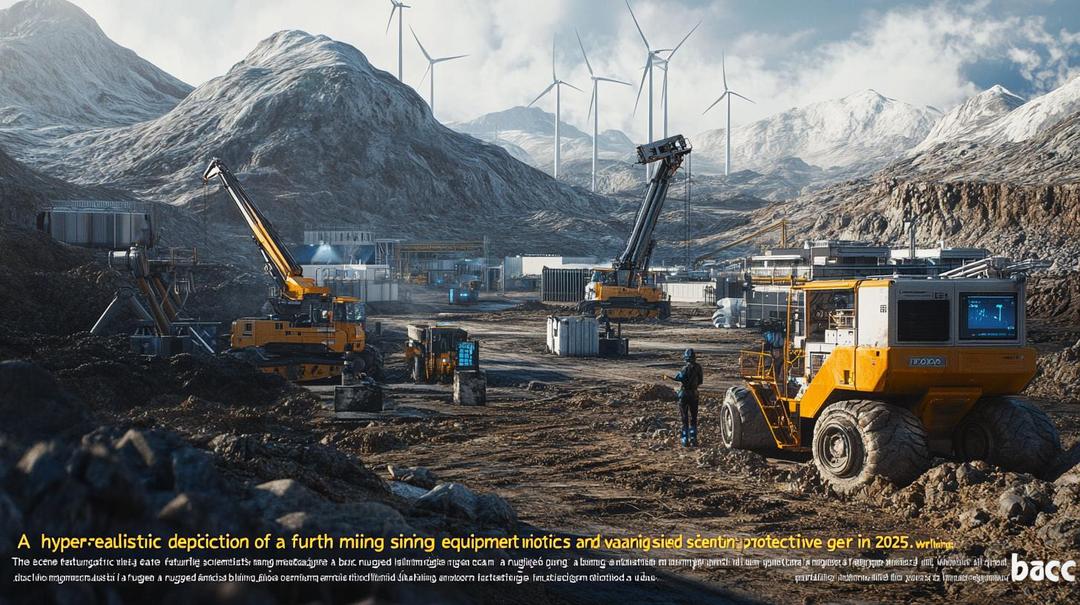Over 85% of REE refining takes place in China, creating a geopolitical quagmire—and raising global alarms. Can the world untangle itself from this supply chain nightmare that it sleepily stumbled into?
We’re going to explore the dynamics of rare earth supply chains in 2025, from the challenges of being dependent on China’s resources to the bright sparks of innovation in recycling and mining tech. Ready to dive in?
What's Inside
Why Are Rare Earth Supply Chains So Critical in 2025?
Rare earth elements (REEs) have become the backbone of modern technology, powering everything from smartphones to renewable energy systems. These special minerals are more than just scientific curiosities—they’re critical components that drive innovation across multiple industries.
The Technology Revolution Powered by Rare Earths
Defense, energy, and manufacturing sectors depend heavily on these unique materials. Powerful magnets made from rare earths enable electric vehicle motors, wind turbines, and advanced military equipment. Global demand is skyrocketing, with projections indicating a 30-40% increase by 2025.
What Are the Biggest Challenges in Rare Earth Supply Chains?
China’s dominance in the rare earth market represents a significant geopolitical risk. Currently controlling over 85% of global rare earth refining capacity, the country’s monopoly creates substantial vulnerability for international manufacturers and technology companies.
Environmental and Ethical Concerns
Mining rare earth elements comes with serious environmental consequences. Traditional extraction methods generate significant pollution and carbon emissions. Sustainability concerns are pushing governments and companies to develop more responsible sourcing strategies.
Geopolitical Shifts: Who’s Leading the Charge to Diversify Supply Chains?
Governments worldwide are taking strategic actions to reduce dependence on Chinese rare earths. The United States, Japan, and European Union have implemented policies to develop domestic and alternative international supply chains.
Emerging Production Centers
Countries like Australia, Canada, and several African nations are positioning themselves as alternative rare earth suppliers. Strategic partnerships and trade agreements are reshaping the global landscape of rare earth production and distribution.
Can Technology Solve the Rare Earth Puzzle by 2025?
Technological innovations are offering promising solutions to rare earth supply challenges. Recycling technologies, particularly urban mining from electronic waste, are becoming increasingly sophisticated.
Potential Breakthrough Technologies
Material science researchers are developing potential rare earth substitutes and more efficient extraction methods. Artificial intelligence and big data analytics are helping optimize procurement and processing strategies.
A Look at the Key Players in Rare Earth Supply Chains
Industry leaders like Lynas Rare Earths and MP Materials are driving significant innovations. Major defense contractors and technology companies, including Lockheed Martin and Tesla, are investing heavily in securing and diversifying rare earth supplies.
Emerging Disruptors
Smaller, innovative companies are introducing novel approaches to rare earth extraction, processing, and recycling, challenging traditional market dynamics.
Sustainability and Environmental Impact: What’s at Stake by 2025?
The environmental footprint of rare earth mining remains a critical concern. Circular economy solutions and advanced recycling technologies are emerging as key strategies to mitigate ecological impacts.
Policy and Innovation Intersection
Policymakers are increasingly focused on balancing supply chain security with sustainable practices, creating frameworks that encourage responsible rare earth production.
Rare Earth Market Projections: What Stakeholders Should Expect in 2025
Market forecasts suggest continued volatility in rare earth pricing and supply. Factors like geopolitical tensions, technological advancements, and environmental regulations will significantly influence market dynamics.
Investment Opportunities
Potential investment areas include mining operations, refining technologies, recycling infrastructure, and green technology developments leveraging rare earth materials.
Conclusion
Rare earth supply chains are at a crossroads. Policymakers must tread carefully to secure supply, manufacturers should rethink sourcing strategies, and investors have a chance to bet on transformative technologies. What’s clear is that REEs are not merely raw materials—they’re the foundation of the future. Whether it’s implementing new mining projects, investing in recycling, or diversifying supply sources, the steps taken today will echo for decades to come.
FAQs
What are rare earth elements, and why are they important?
Rare earth elements are a group of 17 metallic elements crucial for advanced technology, clean energy, and defense systems. They enable everything from electric motors to smartphone screens.
Why is China so dominant in the rare earth supply chain?
Over decades, China has invested in every stage of the REE supply chain—mining, refining, and manufacturing. Its low costs and heavy state support have cultivated a global monopoly.
Can recycling solve rare earth supply chain challenges?
Recycling offers a promising solution, with emerging methods of recovering REEs from e-waste and industrial products like magnets. However, scaling remains a challenge.
What are the environmental impacts of rare earth mining?
REE mining can cause significant harm, from groundwater contamination to habitat destruction. Sustainable practices and new technologies are crucial to reducing these impacts.
Are there alternatives to rare earth elements?
Researchers are exploring substitutes for REEs in magnets and batteries, but full-scale adoption is still years away. Innovations in material science may change this by 2025.


Dustin
Driven by a fascination with rare earth elements and their role in powering modern tech and engineering marvels. A true car and tech enthusiast, he loves exploring how these hidden heroes fuel our most exciting innovations.
You Might Also Like…